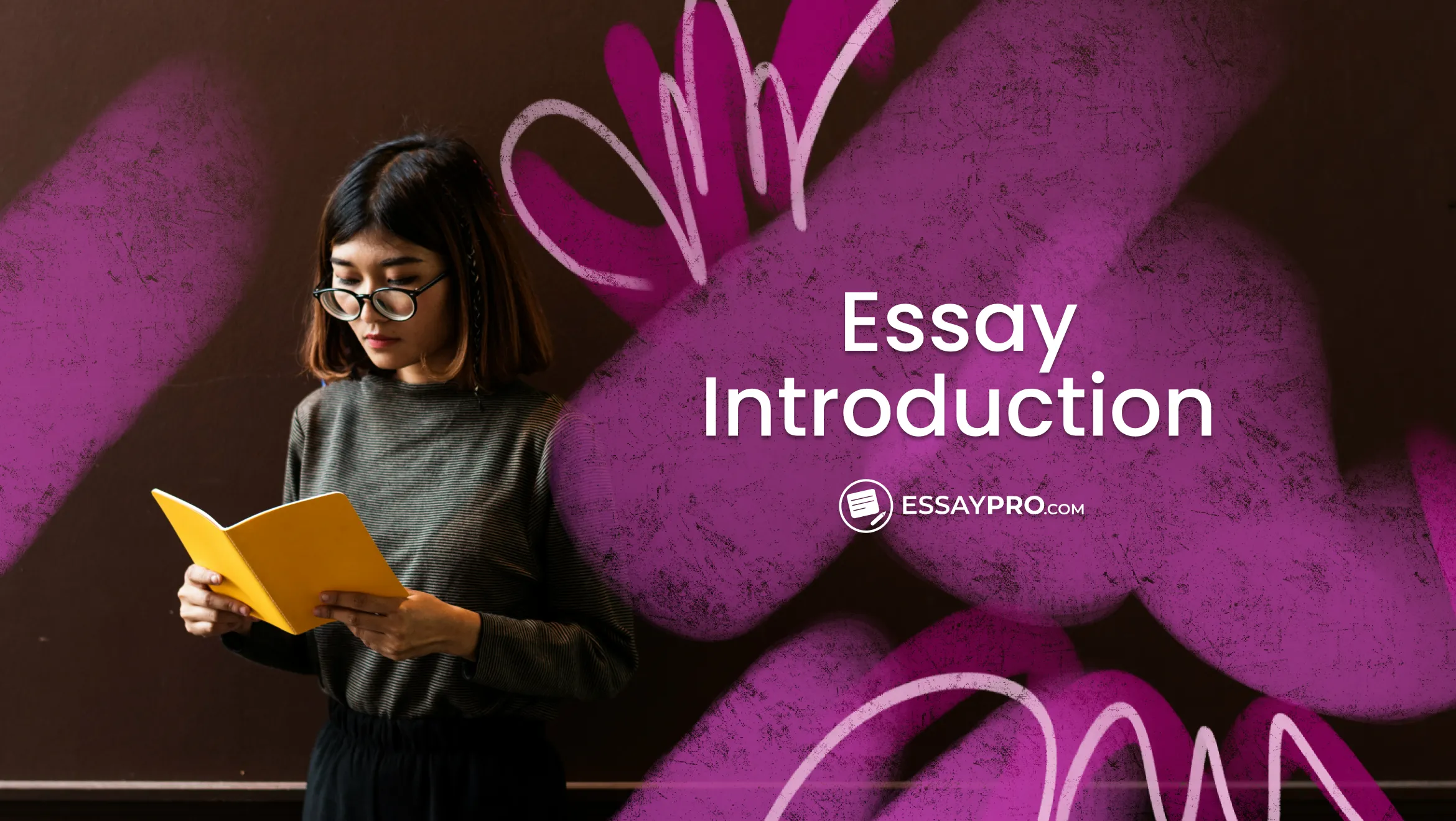Writing an illustration essay involves more than just adding a few pictures. While it may seem simple, creating an effective illustrative essay requires time and a strong understanding of the topic. By using guides and examples, students can easily master this type of writing. To learn how to craft a standout illustration essay, check out this article for the definition, suggested topics, and step-by-step guidelines.
What is Illustration Essay
An illustration essay is a type of written composition that uses examples to explain a particular concept or idea. These essays often include visuals and other illustrations to help clarify the topic.
Like other essays, an illustration essay begins with a thesis statement that introduces the main theme and provides a preview of what readers can expect. The essay then presents a series of examples to support the thesis.
The purpose of an illustration essay is to use enough examples to demonstrate a point the writer wants to make. Unlike argumentative essays, it doesn't aim to persuade the audience to adopt a specific viewpoint. Instead, it helps the audience understand the topic through detailed examples. Illustration essays can be used for various purposes, such as describing the benefits of a community garden, explaining the impact of a new technology in education, or illustrating the importance of recycling programs.
Phrases of Illustration
When writing an illustration essay, using specific phrases can help to clearly present your examples and reinforce your points. Here are some useful phrases from our essay writer for illustrating your ideas:


Illustration Essay Checklist
To write a comprehensive, clear, and well-structured illustration essay, use this checklist to ensure your essay effectively conveys your main idea through relevant and detailed examples.
How to Write an Illustration Essay in 6 Steps
Learning how to write an illustration essay can be straightforward and impactful by following these steps prepared by our service:
.webp)
Step 1: Select a Topic
If you have the freedom to pick your topic, select one that you are genuinely interested in. Your enthusiasm for the subject will come through in your writing, making it more engaging for your readers. Think about subjects that you find intriguing or have a strong opinion about. This passion will help you stay motivated throughout the writing process and make the research feel less like a chore. Additionally, a topic that interests you will likely interest your readers as well, making your essay more impactful.
Step 2: Research
Before you start writing, gather ample information from reliable sources. Embrace research as your foundation; it's essential for providing accurate and detailed examples in your essay. Use credible platforms such as Oxford Academic and Google Scholar to find scholarly articles, books, and other reputable sources. Take notes and organize your findings to easily reference them when writing your essay. Thorough research ensures that your examples are well-supported and enhances the credibility of your writing. The more comprehensive your research, the stronger your academic essay will be.
Step 3: Write an Outline
Creating an outline is a crucial step that helps organize your thoughts and structure your essay. Your outline should include an introductory paragraph, body paragraphs, and a conclusion.
- Introduction: Start with an introduction that presents your topic, provides necessary background information, and states the significance of the topic. Conclude the introduction with a clear thesis statement that outlines the main idea of your essay.
- Body Paragraphs: Plan each body paragraph to focus on a single example or idea that supports your thesis. Begin each paragraph with a topic sentence, followed by detailed examples and explanations. Use transitional phrases to ensure a smooth flow between paragraphs and maintain coherence throughout the essay.
- Conclusion: Conclude your essay by restating the thesis in a new way, summarizing the main points discussed in the body paragraphs, and providing a final thought or statement that wraps up your essay.
Step 4: Write Your Ideas
With your outline in place, start writing your essay by expanding on each point. Transform your main ideas into full paragraphs, making sure each paragraph clearly presents one example and supports it with detailed evidence. Write in a clear and concise manner, avoiding unnecessary jargon or overly complex sentences. Each paragraph should build on the previous one, creating a cohesive and logically organized essay. Make sure your writing is engaging and that your examples effectively illustrate your points.
Step 5: Review
After completing your essay, take the time to review and edit it thoroughly. Read through your essay at least twice to catch any grammatical, structural, or contextual errors. Check that your examples are clear and well-supported, and ensure that your essay flows logically from one point to the next. Make sure your writing is free of plagiarism by properly citing all sources. Editing is a crucial step that can greatly improve the clarity and quality of your essay, so don’t rush this process.
Step 6: Enjoy Your Perfect Essay
By following these steps, you should have a well-organized and effective illustration essay. Take a moment to appreciate your hard work and the finished product. Remember, writing can be a smooth and rewarding process when you approach it methodically and with attention to detail.
Illustration Essay Outline
Before starting your illustrative essay, it's essential to prepare an outline. A simple way to do this is to write a 5-sentence outline, with each sentence briefly describing the focus of each paragraph. This will help you organize your main ideas and develop them further.
Here are the key parts your illustration essay outline should include:
Illustration Essay Topics
When beginning the writing process, choosing a compelling topic is the first step. Here is a list of illustration essay topics to inspire you. Feel free to select one from the list to craft an engaging and informative illustration essay.
- Illustrate the daily routine of a remote worker and the challenges they face.
- Describe the process of training a service dog and its impact on individuals with disabilities.
- Explain the benefits of mindfulness meditation for reducing stress and improving mental health.
- Detail the steps involved in organizing a successful community clean-up event.
- Illustrate the effects of a balanced diet on overall health and well-being.
- Explain how a public library can serve as a community hub and support lifelong learning.
- Describe the process of starting a small business and the challenges entrepreneurs encounter.
- Illustrate the importance of voting in local elections and how it impacts the community.
- Explain the role of social workers in supporting vulnerable populations and provide examples from real-life scenarios.
- Detail the impact of volunteer work on both the volunteers and the community they serve.
Illustration Essay Example
Looking at our well-written illustration essay example can help you understand this writing style better. Use the clear example below to improve your own writing skills.
We also recommend taking a look at our comprehensive guide on a narrative essay, complete with examples.
Types of Illustrative Example
There are many effective methods to enhance your illustrative writing. Here are some of the best ways to present evidence:
%2520(1).webp)
- Drawing from personal experiences
- Referring to historical events or current facts
- Comparing different objects
- Using findings from scientific research
- Including numbers and data
Let's take a closer look at using personal experience as an example. You'll need enough details to fill your body paragraphs with vivid examples from your own experiences. Here are some useful methods to get inspired:
- Personal Observation: Investigate a specific object related to your topic. Describe any event, situation, location, or person you have observed and share your thoughts. When detailing your observational experiences, include sensory expressions to help your audience visualize the situation as if they were witnessing it themselves. For example, describe a quiet morning in a park, noting the soft rustle of leaves, the crisp smell of the morning air, and the sight of early joggers.
- Personal Memories: Draw from your own life to support your main argument. Reflect on meaningful life lessons or recent experiences that are significant to you. Describe these memories vividly, allowing your readers to understand the situation as you perceived it. For instance, recall a challenging project at work, explaining how the pressure, collaboration with colleagues, and eventual success taught you valuable lessons about perseverance and teamwork.
- Interviews: Conduct face-to-face conversations with experts related to your topic. These individuals can share insightful examples that can make your writing stand out. Prepare thoroughly by researching and listing your questions before the interview. For example, if writing about sustainable living, interview an environmental scientist or activist who can provide firsthand accounts of effective sustainability practices and their impact on the community.
Final Words
To conclude, by choosing interesting examples, doing your research, and explaining them clearly, your illustration essay can become a great piece of work. Let your creativity flow, add vivid stories, and take a journey where ideas grow and understanding deepens.
If you find it hard, buy essay from our creative writers. They will bring your essay to life with engaging examples that inspire readers, leaving them interested and wanting more!
Do You Need an Extra Help With Your ILLUSTRATION ESSAY?
Adress to our professionals and get qualified help asap!
FAQ
What are Some Good Illustration Essay Topics?
Some good illustration essay topics are:
- Today's most urgent social problems.
- How art contributes to scientific breakthroughs.
- The connection between creativity and mental health.
- The difficulties faced by student-athletes.
- How climate change impacts animal species.
- Why teamwork is crucial in sports.
What are the Characteristics of an Illustrative Essay?
The characteristics of an illustrative essay include:
- Clear and straightforward language.
- Specific and detailed examples.
- Logical organization with an introduction, body, and conclusion.
- Focus on explaining and illustrating the main idea.
How Do You Write an Illustration Essay?
To write an illustration essay, follow these steps:
- Start with an introduction that presents your main idea or thesis.
- Use clear examples to explain your points in the body paragraphs.
- Each paragraph should focus on one example that supports your thesis.
- Conclude by summarizing your main points and restating the thesis in a new way.

Adam Jason
is an expert in nursing and healthcare, with a strong background in history, law, and literature. Holding advanced degrees in nursing and public health, his analytical approach and comprehensive knowledge help students navigate complex topics. On EssayPro blog, Adam provides insightful articles on everything from historical analysis to the intricacies of healthcare policies. In his downtime, he enjoys historical documentaries and volunteering at local clinics.
- Illustration Essay. (n.d.). Retrieved June 28, 2024, from https://www.dbu.edu/writing-center/_documents/quick-reference-flyers/specific-assignments/illustration-essay.pdf
- Publisher, A. removed at request of original. (2015, October 27). 10.2 Illustration. Open.lib.umn.edu; University of Minnesota Libraries Publishing edition, 2015. This edition adapted from a work originally produced in 2010 by a publisher who has requested that it not receive attribution. https://open.lib.umn.edu/writingforsuccess/chapter/10-2-illustration/
.webp)




